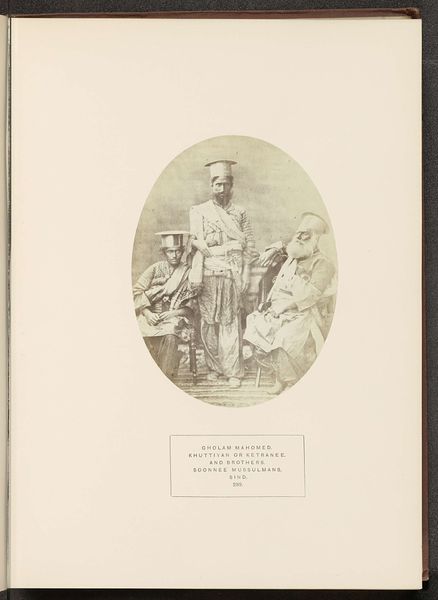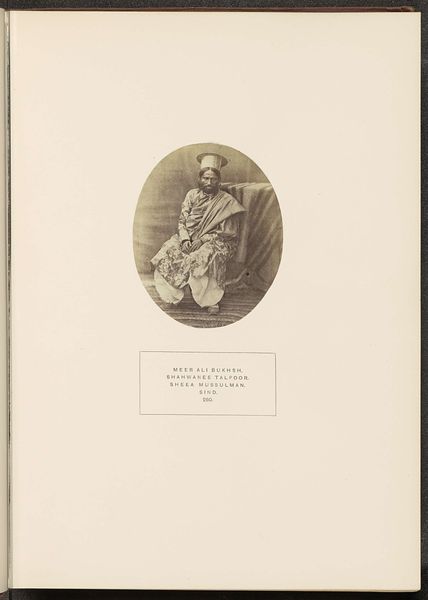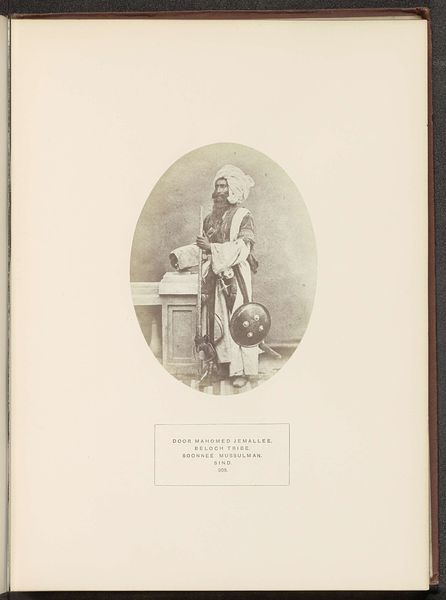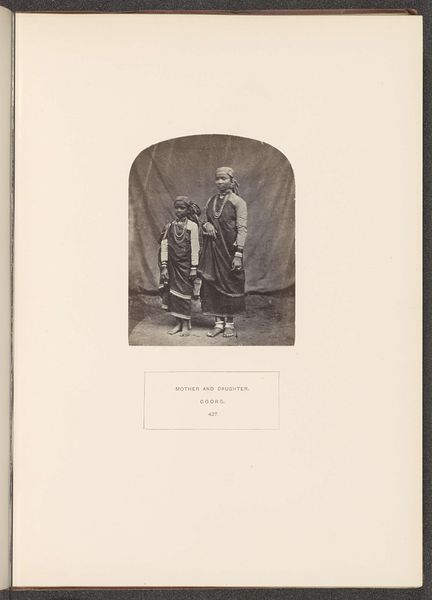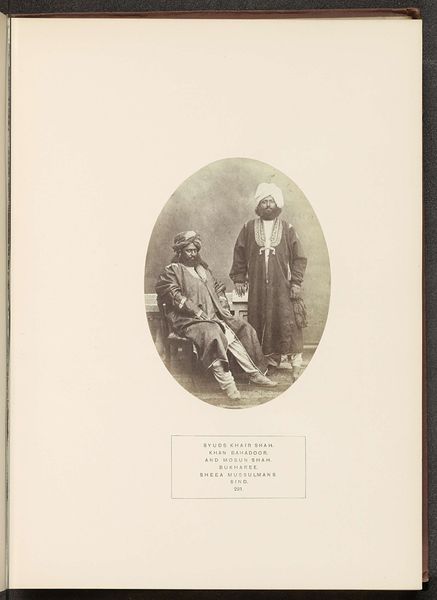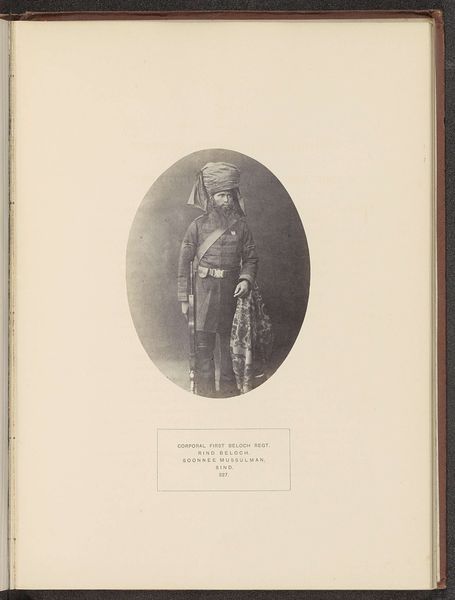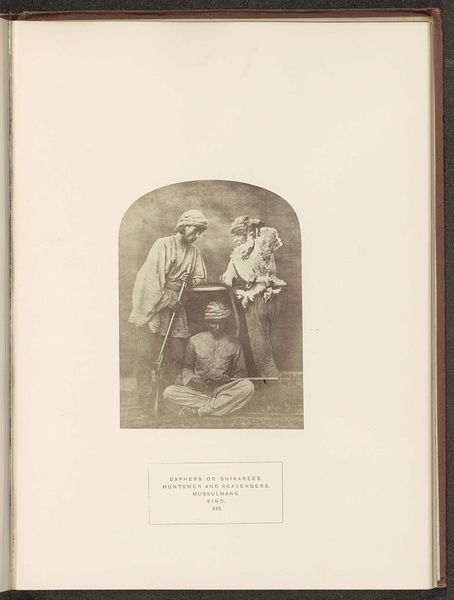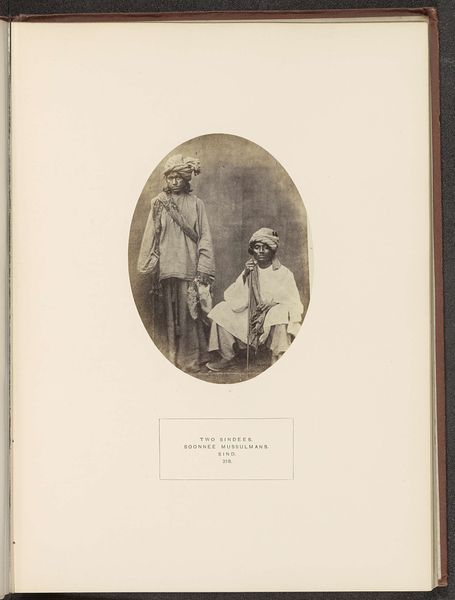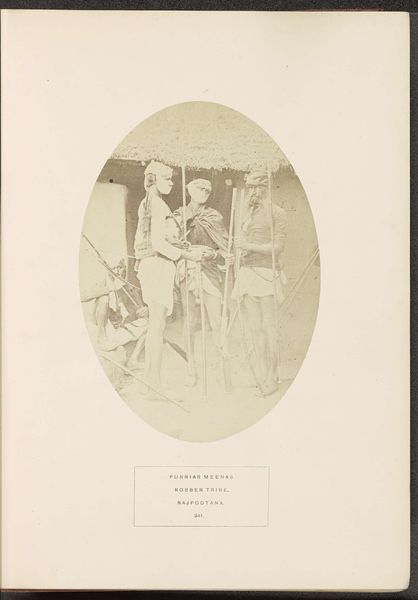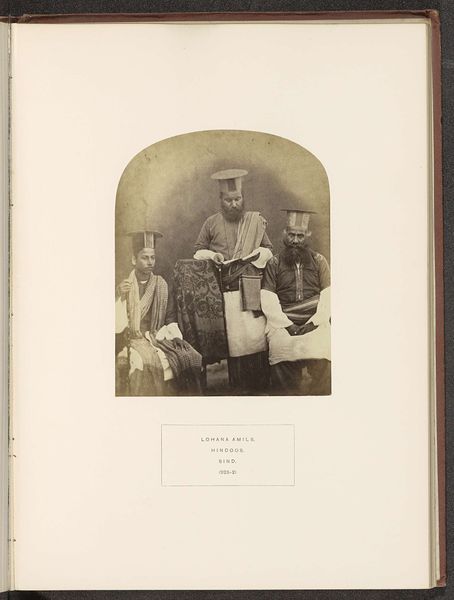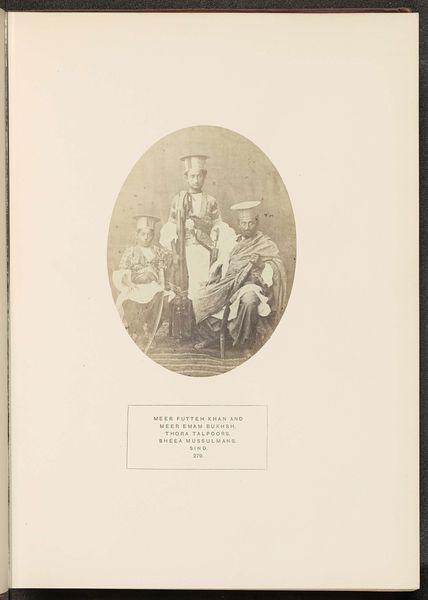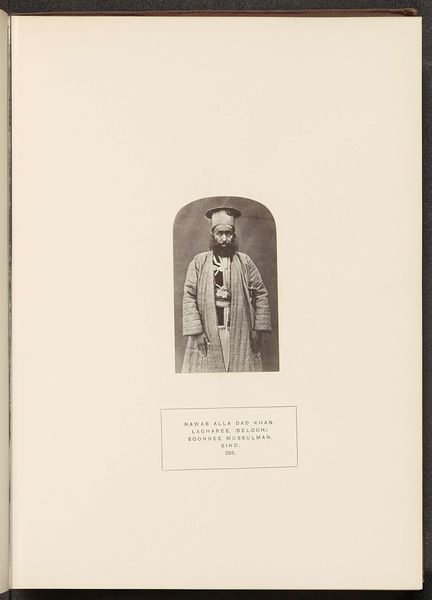
Portret van Mir Bhodo en Mir Mahomed Hussun met een bediende before 1872
0:00
0:00
photography, albumen-print
#
portrait
#
16_19th-century
#
photography
#
orientalism
#
albumen-print
Dimensions: height 146 mm, width 109 mm
Copyright: Rijks Museum: Open Domain
Curator: This albumen print, titled "Portret van Mir Bhodo en Mir Mahomed Hussun met een bediende," which translates to "Portrait of Mir Bhodo and Mir Mahomed Hussun with a Servant", dates from before 1872. Editor: A strikingly composed image, all muted tones, almost dreamlike. There's a sense of solemn stillness emanating from these three figures; I feel almost like I am intruding. Curator: Indeed. These photographs, popular in the 19th century, represent a significant shift in how the world was documented and disseminated, particularly the ‘Orient’ for European audiences. Albumen prints themselves involved an elaborate chemical process, egg whites and silver nitrate transforming into these fragile, but ultimately lasting images. Editor: There’s an inherent theatricality to these early portraits, a stillness enforced by long exposures and deliberate posing, they transform people into characters… Observe their clothes and bearing; do you imagine they were directing how they wished to be portrayed here? Curator: Without a doubt. We see a clear engagement with "Orientalist" tropes. This involves not only the aesthetics— the composition of the three figures, for instance— but also the construction and reinforcement of social hierarchies through the photographer's lens, perhaps furthering notions about the exotic and unfamiliar “other.” Editor: Despite the imposed artificiality of studio portraiture of the time, I feel an undeniably intimate gaze from Mir Bhodo. Perhaps it's the wisdom etched in his weathered face or the slight tension in his posture, but for me, that look feels profoundly human and sincere. It is easy to think they were robbed of their power through the construction of these images but, even with a biased photographer, you see power radiating from their presence here. Curator: Absolutely. This pushes us to consider the conditions of production – who controlled the camera, the framing, the ultimate presentation – alongside the subjects' own agency in how they present themselves, even within those limitations. The original context of viewing would further influence the meaning created through consuming photographs such as these. Editor: To me, this photograph functions like a fading melody echoing through time; it stirs curiosity in our imaginations, but we have the ability to reconstruct new visions with our view today. Curator: Yes. A complex entanglement of materials, labor, and representation… A valuable opportunity to engage with both the visible and the invisible forces that shaped it.
Comments
No comments
Be the first to comment and join the conversation on the ultimate creative platform.
